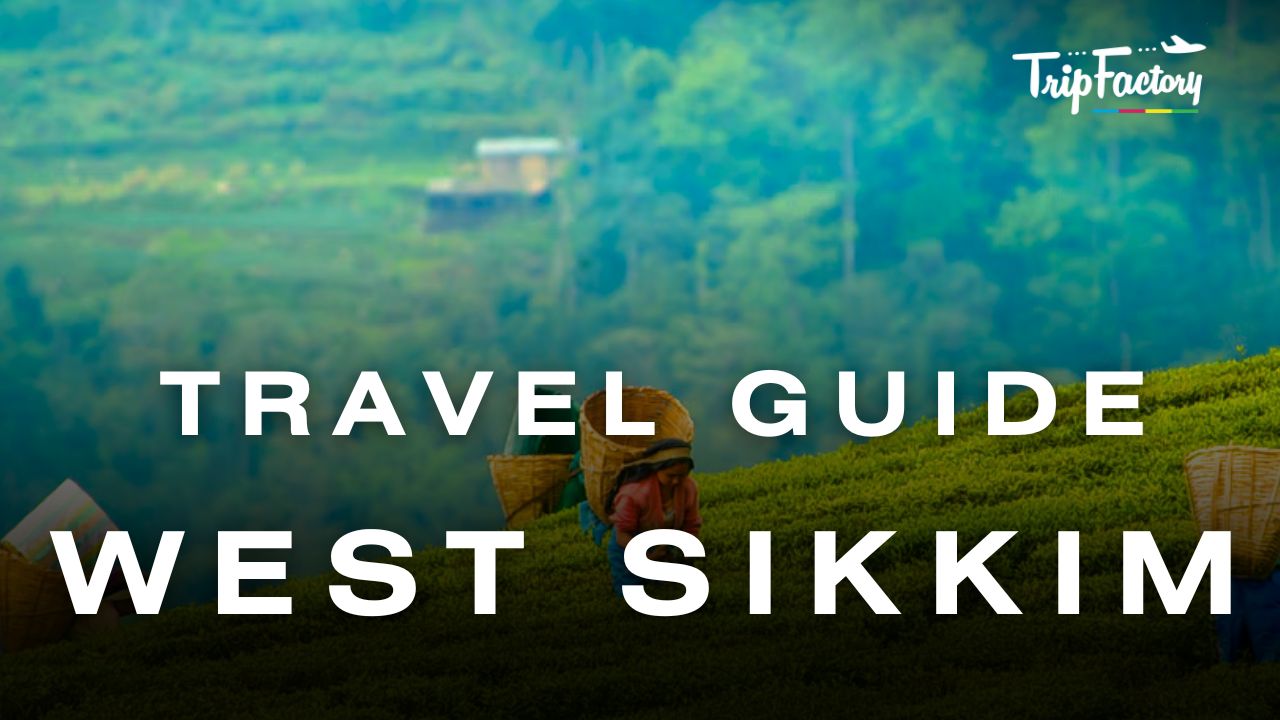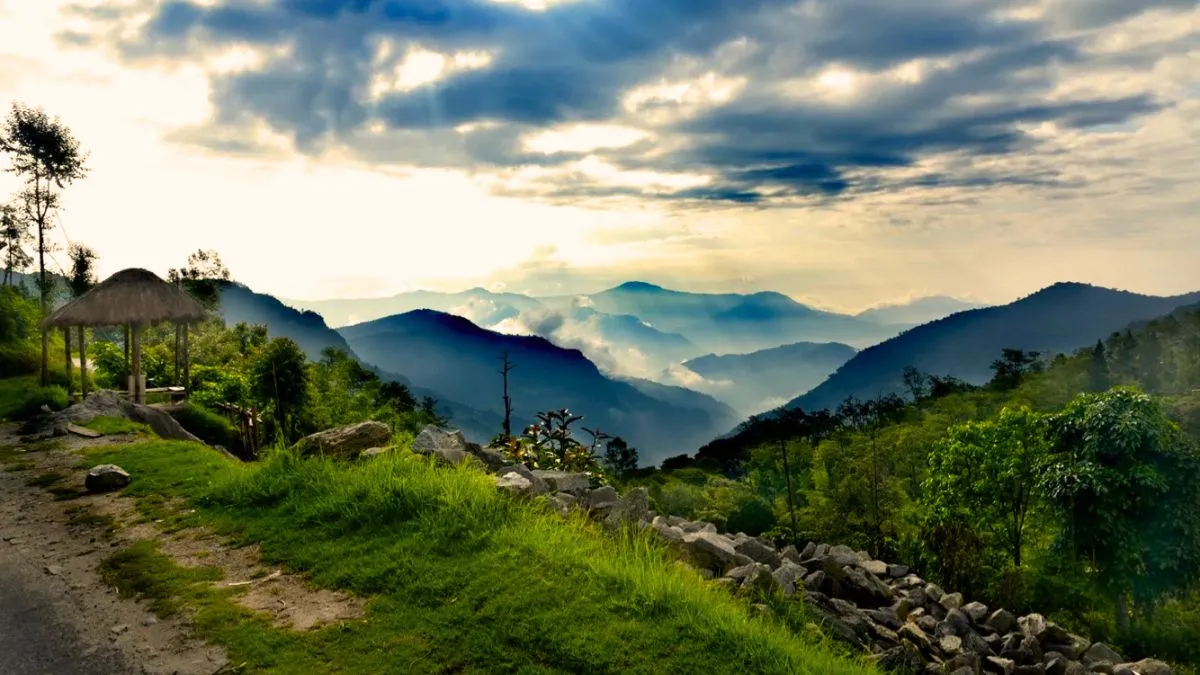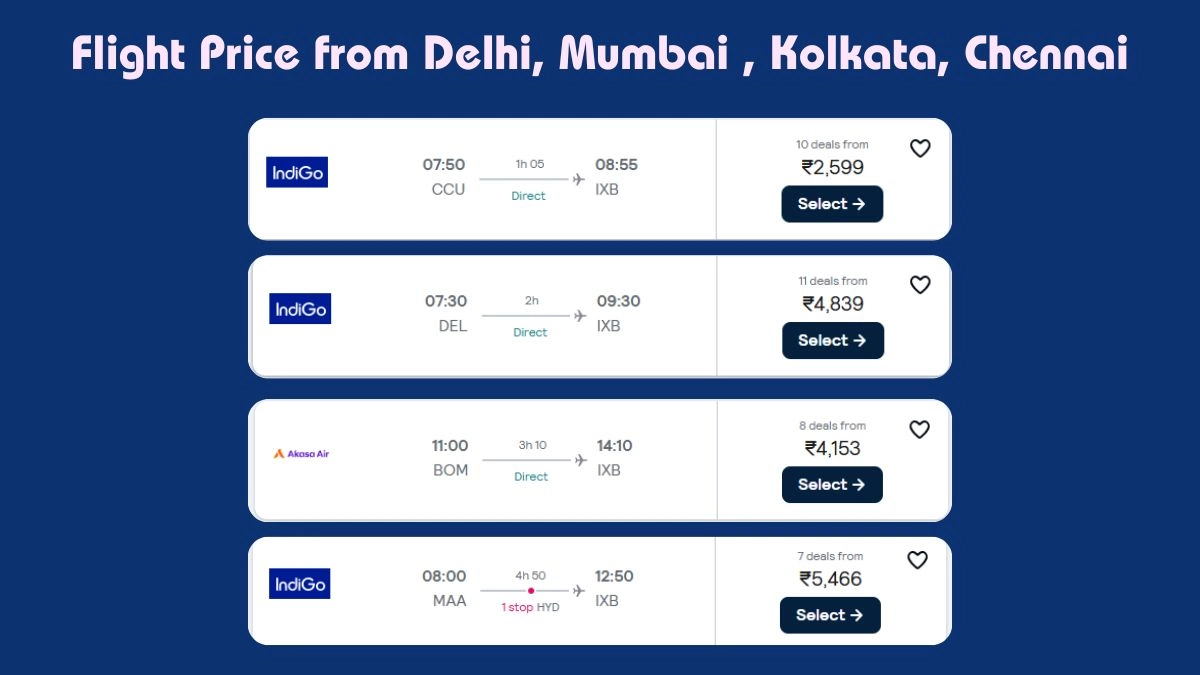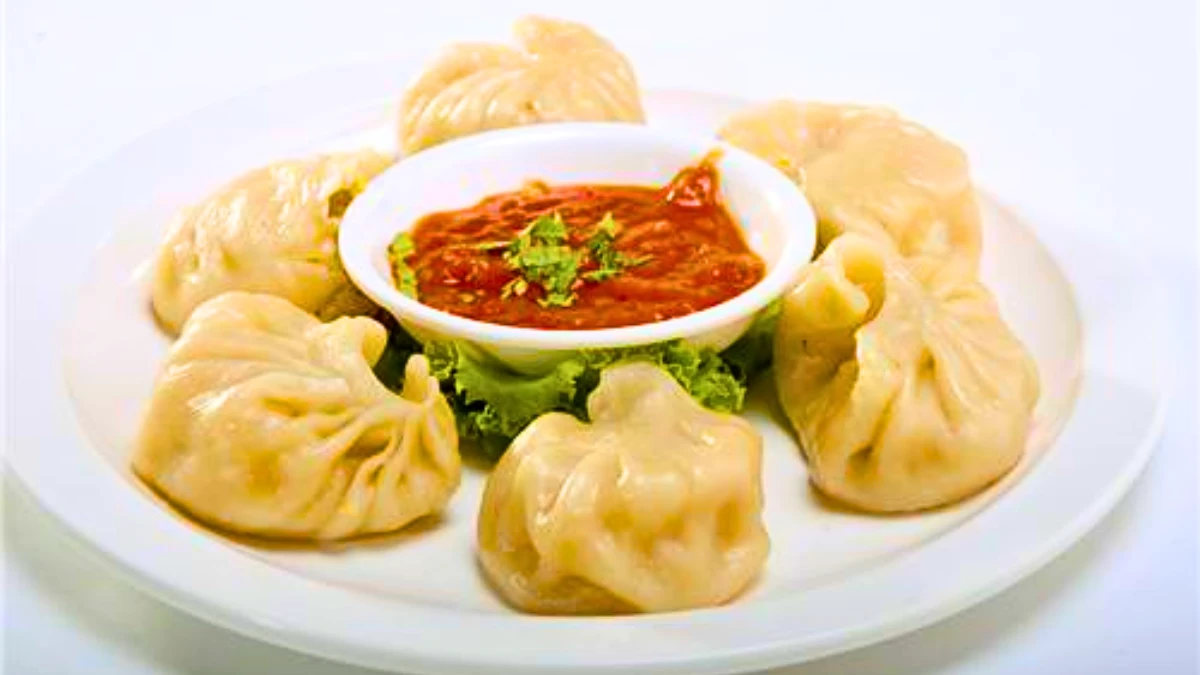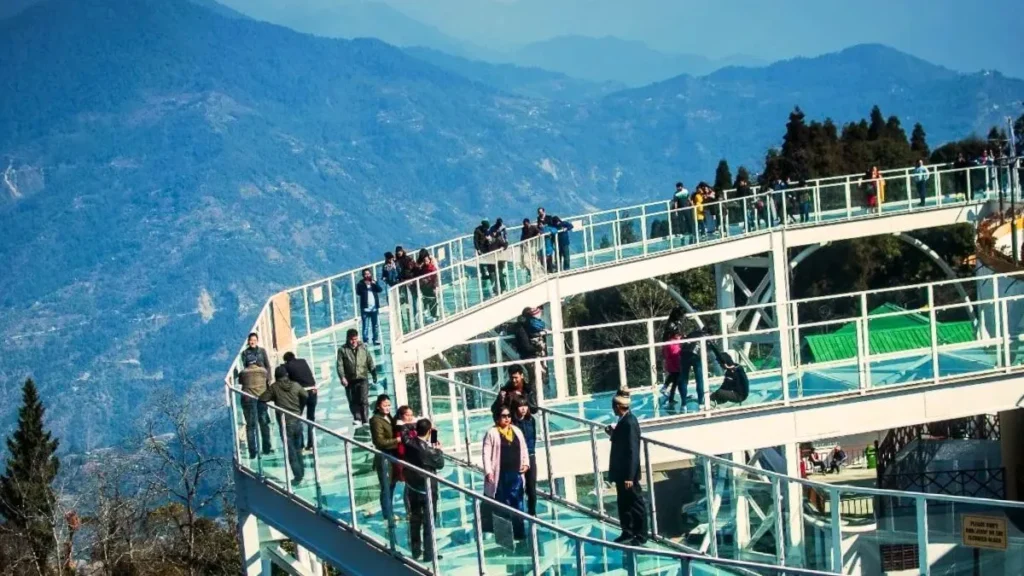Sometimes we need a short break from our daily routine for that West Sikkim is a perfect and great place in Sikkim, India. If you question why Visit West Sikkim? then I can say It is popular for its amazing hill towns, fresh air, and views of the snow covered Kanchenjunga mountain.
The main town in West Sikkim is Pelling, which is also a popular tourist destination. There are many good hotels in Pelling West Sikkim, from budget stays to luxury rooms with mountain views.
The weather in West Sikkim is usually pleasant. Summer (March to May) is cool and green, while winter (October to December) is cold but clear. The temperature in West Sikkim stays between 10°C and 25°C in summer and can drop below 5°C in winter, especially at night. If you’re planning a visit, knowing the weather will help you pack the right clothes and plan your days better.
West Sikkim also has many interesting places to visit, such as Pemayangtse Monastery, Rabdentse Ruins, Khecheopalri Lake, and the Pelling Skywalk. These are some of the top tourist spots in West Sikkim. For travelers looking for quiet and less crowded places, Hee Bermiok is a small village worth exploring. It is peaceful and offers great views, with homestays and friendly locals.
In this guide you will get everything about west Sikkim to help you plan your trip with clear and useful details, weather, best time to visit, must see places, hotel tips, and more. So let’s go to the detailed info
West Sikkim Travel Guide – Everything Included
Weather in West Sikkim
As you know that Most of the part of Sikkim is pleasant and for the West Sikkim it’s also the same. For raveling in this location the best time is from March to May when the temperature is just right not too hot, not too cold around 15°C to 25°C. It’s perfect for exploring and enjoying the fresh mountain air.
At the time of winter the weather is chilly especially at night, sometimes dropping close to 5°C and the winter comes between October and December. But the days are mostly sunny and bright, so it’s still a nice time to see the sights if you don’t mind the cold.
During the monsoon months, which is from June to September, it literally rains a lot. Roads get slippery, and landslides are the most possible thing , so it’s better to avoid traveling during this period.
Overall I can say, West Sikkim’s weather is cool and comfortable most of the year you can visit anytime but make sure to avoid the monsoon and other seasons are absolutely fine either winter or summer.
Where to Stay in West Sikkim
If you are ready to travel and thinking about staying in West Sikkim, then I say don’t worry you can find the best options whether you are traveling on a budget or looking for something more comfortable.
In West Sikkim The main tourist hub is Pelling where you’ll find many hotels and guest houses according to your preferences. If you prefer a peaceful and quiet stay then some smaller villages like Hee Bermiok also offer homestays and guest houses where you can experience local culture very closely.
Most accommodations in West Sikkim provide warm hospitality and basic facilities and some also offer modern comforts like Wi-Fi, hot water, and dining options. Recommend you to book in advance during the peak seasons especially when you want to stay in popular areas like Pelling.
How to Reach West Sikkim
West Sikkim is not a single place it has lots of tourist spot but to reach West Sikkim the best way is to reach from Siliguri to Pelling you can get direct bus from the Tenzing Norgay Bus Terminus , also you can book share taxi or private taxi from the outside of NJP or Bagdogra Airport which will takes around 5 to 6 hours (127.2 km), depending on the weather and road conditions.
Those coming from different states or cities book your train ticket or Flight from Bagdogra Airport or New Jalpaiguri Station (NJP) then take a taxi , fare of the taxi around between ₹2,500 and ₹4,000, depending on the type of vehicle and booking website.
Estimate Flight Tickets Price and Timings to IXB
here is the estimate flight tickets price and timings from Delhi , Mumbai, Kolkata and Chennai :
What to Eat in West Sikkim
There are lots of dishes in Sikkim but one of the most famous and popular is momo YES! But you can feel the difference in the test at every location, you can get both vegetarian and non-veg momo with spicy chutney. Another local favorite is thukpa, a hot noodle soup that’s both filling and flavorful, especially good on a cold day.
You’ll also come across dal bhat (rice with lentils and vegetables), a staple meal in the region. In many homestays and local eateries, you might be served traditional Sikkimese dishes like gundruk soup (fermented leafy greens) or sel roti (a homemade rice-based doughnut often served during festivals).
Most of the restaurants and cafes in Pelling offer a mix of Indian, Tibetan, and Nepali food, so there’s no problem for anyone whether you’re vegetarian or a meat lover, West Sikkim will provide you meals according your test, your preference
Places to Visit in West Sikkim
West Sikkim isn’t just a destination it’s a feeling. With its quiet hills, deep forests, and peaceful villages, it has a way of slowing you down and making you feel connected to nature and yourself. If you’re someone who enjoys clean air, beautiful views, and places that speak to the heart, here are some must visit spots:
1. Pelling
Pelling is where most journeys in West Sikkim begin. It’s a small town, but the views here are huge, especially the early morning sights of Mt. Kanchenjunga glowing in golden light. The Sky Walk adds a little adventure, and nearby, the Chenrezig Statue stands tall, bringing a deep sense of calm. You can also visit the old Pemayangtse Monastery, where monks chant peacefully, and prayer flags dance in the wind.
2. Khecheopalri Lake
This lake is more than just beautiful, it’s considered sacred. Locals believe it listens to your wishes. It’s hidden in a quiet forest, and no leaves ever float on the water. Birds gently pick them off. Sitting by the lake feels like pressing pause on the world. You hear birds, the soft breeze, and maybe even your own thoughts.
3. Rabdentse Ruins
Walk through a short forest trail and you’ll find the Rabdentse Ruins, the remains of Sikkim’s old capital. Nature has taken over some moss covered stones, roots wrapped around walls but that only adds to the peaceful feeling. It’s a quiet place, with views of valleys and mountains that make you want to sit and stay awhile.
4. Yuksom
This small village has a big place in Sikkim’s history. It’s where the first king of Sikkim was crowned. You can visit the Norbugang Chorten, Dubdi Monastery, and feel the peaceful energy that lives here. Surrounded by forests and rolling hills, Yuksom is perfect for gentle walks and quiet evenings. If you love treks, this is also the starting point for the famous Dzongri and Kanchenjunga trails.
5. Hee Bermiok
If you want to experience real village life, Hee Bermiok is the place. You’ll find homestays with kind hosts, local food made from fresh ingredients, and endless views of green hills. It’s rich in natural beauty, wildflowers, butterflies, birds and has a slower pace that makes you feel truly rested. Evenings here are calm, with sounds of crickets and faraway temple bells.
6. Singshore Bridge
The Singshore Suspension Bridge is a wonder in itself swinging high above a deep valley. It’s the highest bridge in Sikkim, and when you stand in the middle, you feel like you’re floating between mountains. On clear days, the view stretches far, and nearby waterfalls like Changey Falls complete the picture. It’s a great spot for photos, but more than that, it’s a place to just breathe and be.
West Sikkim invites you not just to see, but to feel its silence, its fresh air, and its gentle way of life. These places don’t just stay on your travel list; they stay in your heart.
Top Things to Do in West Sikkim
West Sikkim is more than just beautiful views; it’s a place where you can truly slow down, enjoy nature, and feel refreshed. Whether you’re here for adventure, peace, or local culture, there’s always something special to do. Here are some of the best things you shouldn’t miss:
1. Watch the Sunrise Over Kanchenjunga
Waking up early in Pelling and seeing the first sunlight touch Mt. Kanchenjunga is magical. The mountain glows golden and the whole sky changes color. It’s a peaceful and unforgettable start to your day.
2. Walk Around Khecheopalri Lake
Spend quiet time walking around this sacred lake, surrounded by forest and prayer flags. You can sit by the water, make a wish, and listen to the sounds of birds and nature. It feels healing.
3. Visit Ancient Monasteries
Explore peaceful monasteries like Pemayangtse and Dubdi. They’re full of history, beautiful wall paintings, and the soft hum of monks chanting. These places give you a deep sense of calm and spiritual energy.
4. Cross the Singshore Bridge
Feel the thrill as you walk across one of the highest suspension bridges in Asia. The view from the middle is incredible deep valleys, green forests, and misty mountains all around.
5. Trek Through Nature Trails
If you enjoy walking, try short nature treks around Yuksom or go for longer hikes towards Dzongri (if you’re fit for it). Along the way, you’ll find forests, waterfalls, and tiny villages that feel untouched by time.
6. Enjoy a Stay in Hee Bermiok
Slow down and enjoy village life. You can stay with local families, try home-cooked meals, help in organic farms, and watch the stars at night. It’s peaceful and gives you a real feel of Sikkimese culture.
7. Taste Local Food
Try fresh momos, thukpa (noodle soup), and sel roti (a sweet rice snack). The food here is simple but comforting. Most of it is made fresh with local ingredients.
8. Click Photos, but Also Pause
Yes, West Sikkim is very photogenic—but remember to pause, breathe the mountain air, and enjoy the silence. Sometimes the best moments aren’t captured by a camera.
Best Time to Visit West Sikkim
The best time to visit West Sikkim is from March to June and September to November. These months offer the most pleasant weather, clear views of the mountains, and comfortable travel conditions.
March to June (Spring & Early Summer)
This is one of the most popular times to visit. The days are warm and the skies are mostly clear, which means perfect views of the Kanchenjunga range. Flowers are in full bloom, especially rhododendrons in April and May. It’s great for sightseeing, short treks, and enjoying nature at its freshest.
September to November (Autumn)
After the monsoon, everything looks extra green and clean. The air is fresh, and the views of the mountains are at their best. The weather is cool and dry, making it ideal for walks, photography, and outdoor activities. This is also a great time for cultural festivals in the region.
Avoid July to August (Monsoon)
During these months, heavy rain can cause landslides and roadblocks, especially in hilly areas. Travel becomes risky and the views are often covered in fog. Unless you’re visiting for monsoon vibes, it’s best to skip this season.
December to February (Winter)
If you like cold weather and snow-covered peaks, winter is quiet and peaceful. However, temperatures can drop below freezing, and some roads may be closed due to snow or ice. Make sure to pack warm clothes and check travel updates if you’re visiting at this time.
Tip: If you want the best mix of good weather, beautiful views, and easy travel, plan your trip for late March to early May or October. You’ll enjoy nature in full color without big crowds.
Suggested Itinerary for West Sikkim
Day 1: Arrive in Pelling, visit Pemayangtse Monastery and Rabdentse Ruins, enjoy sunset views of Kanchenjunga.
Day 2: See sunrise at Khecheopalri Lake, visit Singshore Bridge, explore local markets, and visit Rimbi Waterfalls.
Day 3: Experience village life in Hee Bermiok, enjoy nature and local culture.
Day 4: Optional trek or relax in Pelling, visit cafes and shop.
Day 5: Final stroll in Pelling and depart.
Must Know Before You Travel to West Sikkim
- Check Permits – Indian travelers usually don’t need permits, but some border areas may require them. Foreigners will need permits for certain places.
- Weather Changes Fast – Pack a light jacket and raincoat, even in summer. Dress in layers.
- Carry Cash – ATMs are limited and card/UPI payments are not accepted everywhere, especially in small towns.
- Roads Are Bumpy – Hilly roads can be tough. Travel light and take motion sickness medicine if needed.
- Mobile Network Is Weak in Remote Areas – Don’t rely on constant internet access. Inform family in advance.
- Respect Local Culture – Be polite, remove shoes in monasteries, and ask before taking photos of people.
- Keep It Clean – Use dustbins, avoid single-use plastic, and protect the natural beauty.
frequently asked questions
How many days are enough for West Sikkim?
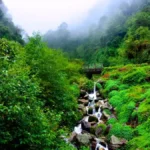
We would recommend an itinerary of 7 nights and 8 days to see the most stunning locations in Sikkim.
Which is the best month to visit West Sikkim?
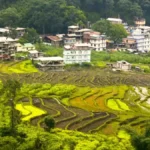
March to May or October to mid-December are the ideal times to visit Sikkim, according to Sikkim Tourism. The ideal time to go is in the spring, from March to May, if you want to see the natural splendor in blossom.
What is the famous food in Sikkim?
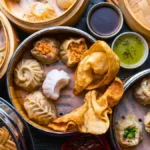
Sikkim is renowned for having a rich and varied culinary tradition with unusual flavors and ingredients. Among the most well-known dishes in Sikkim are momos, thukpa, daal bhaat, and bamboo shoot curry.
What is the Speciality of Sikkim?
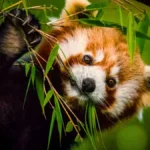
Sikkim, which is a region of the Eastern Himalayas, is well-known for its biodiversity, which includes alpine and subtropical climates. It is also home to Kangchenjunga, the third-highest mountain in the world and the highest peak in India. Gangtok is the capital and biggest city in Sikkim.
What is Sikkim’s famous culture?
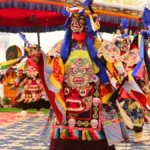
Sikkim’s traditional handicrafts are a reflection of its rich cultural history. The state government founded the Handicrafts and Handloom Institute to conserve and develop traditional crafts like as thangka paintings, wood-carved furniture, and carpets.

